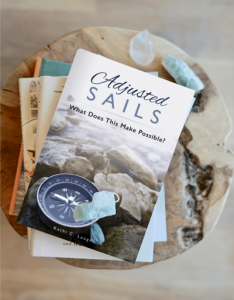
Recently, I have found my focus shifting more strategically to what is next as I consider plans and priorities.
Perhaps you find yourself here as well.
A productive practice to consider is integrating what I call the other question into our thought processes. I’m always intrigued by inverse statements and questions. There is always another one there.
What we are considering is a fundamental practice for experiencing the full range of possibility thinking. We must be able to consider every side of our choices.
In my work as a strategist over the years, this has proven to be what has made the difference between goals and objectives that are reached with greater ease and those that create struggles or even get lost along the way.
There is always another question to consider. The other question is also what quite often delivers us the more significant return.
Questions that drive insight are the ones that move us forward.
Here are three to consider that will help you develop a possibilitarian point of view that leads to creative resilience:
What is the real change I want to achieve?
Know your true objective. Keep asking until you find it. There are several schools of thought on how many layers of questions to ask. For each answer, you ask why that is important. My experience has taught me that we get to the true answer somewhere between questions five and seven.
I want to achieve X. Why? Because XX.
Why do you want XX? Because XXX.
Why do you want XXX? Because XXXX.
Why do you want XXXX?
Because V!
You cannot stay on track if you don’t know where you really want to go. We want to get to the core value being served by taking on the work. I recently went through this practice again about my values around health. It’s the most powerful exercise we can do to get to the truth about what we want to achieve. Of note is that sometimes this exercise helps us identify what we can stop trying to accomplish because our underlying reason isn’t of any real value. But in most cases, we get to our true motivation.
The more you practice this, the faster you will reach your core value. Resiliency is a natural result when we keep our core values at the forefront because we do not look at a circumstance without context. We examine everything against how it can serve what matters most in our lives and work.
What options am I avoiding?
This is crucial because, quite often, what we refuse to consider is our best choice. We all have non-negotiable positions. That’s not what this is about. It’s about what we might be afraid to try or think isn’t possible for us. It’s about removing limitations and not compromising boundaries. When we practice a resilient lifestyle, how we perceive things will change, and what we never considered before can move front and center.
It’s also about tackling resistance head-on.
What is important is that we exhaust every possibility without limiting ourselves to probabilities or what we think we want to do.
What am I missing?
Where are the blind spots? What aren’t we considering that needs to be addressed? What are the risks? If you know them, you can mitigate them from the start or, at a minimum, have a plan in place to address them should they happen. If you do not know the risks, you have not fully defined what you want. If this is a challenging area for you, start with your assumptions. Your risks will be in your assumptions. What are you assuming to be true? What if it is not? What are you assuming is not true? What if it is?
One of the many gifts I received from my iPEC family, where I studied for my certification as an Executive Life Coach, was a very special stone. I’ve had it for many years, and it stays with me as a talisman when I’m thinking through something challenging.
The word problem has been engraved on one side, covering the entire surface. On the other side is the word solution. The solution resides within the problem itself. We must examine it from all sides to find it, but it is there. The other question is what will take us to the other side.










